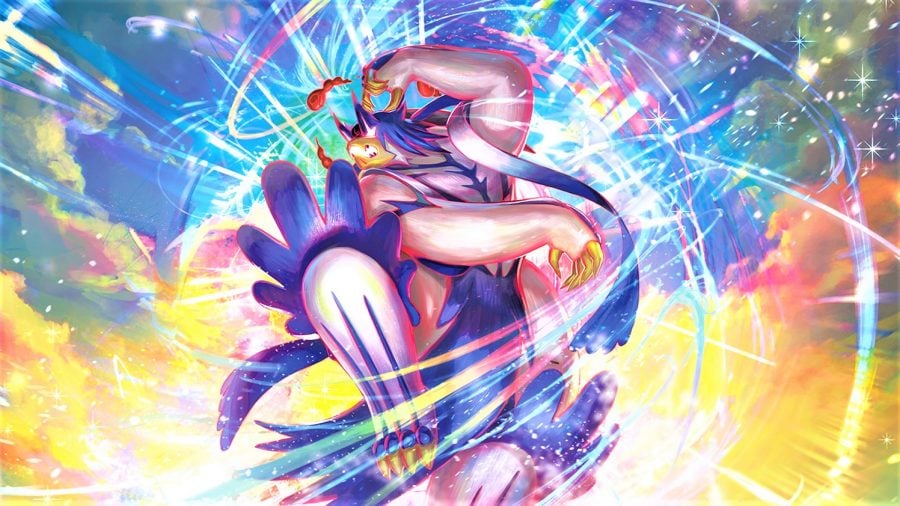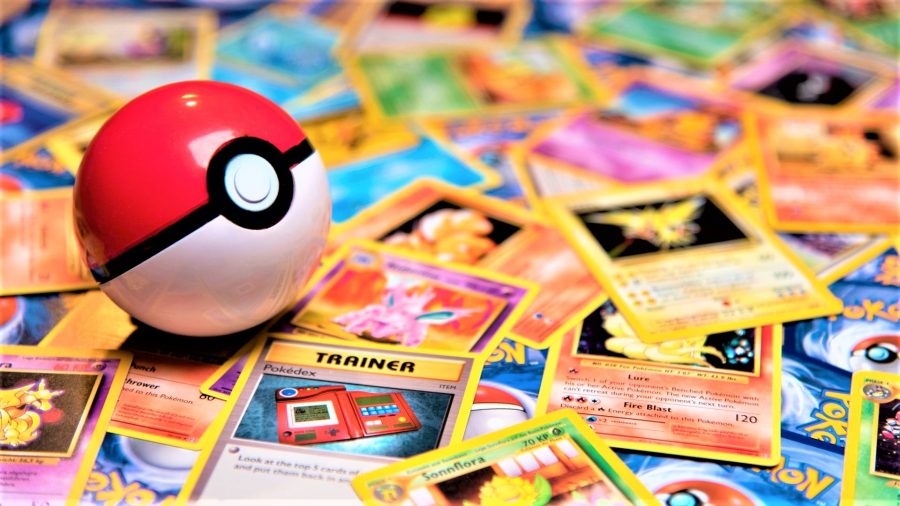So you want to learn how to play Pokémon cards? You’re far from alone. The Pokémon TCG (Trading Card Game) was not the first collectible card game to be released – but, 25 years later, it’s one of only a handful of 1990s-era TCGs that have survived and thrived. This guide explains the game rules and turn phases clear as mud – and offers all the info you need to get started with Pokémon cards – whether you’re playing online or on the tabletop.
The Pokémon TCG is a little lighter on complexity and synergy than Magic: The Gathering or Yu-Gi-Oh, but it has more tactical and strategic elements than meet the eye. Fans of the Pokémon franchise, regardless of age, will delight in this game’s ability to capture both the spirit and theme of the anime.
If you’re already deep in the world of Pokémon, you might try our guides to the strongest Pokémon cards and VSTAR Pokémon cards. If you’re a primarily mobile trainer, check out our sister site Pocket Tactics’ guide to the latest Pokémon Go promo codes.
Otherwise, let’s get straight into that long grass and meet some wild Pokémon!
HOW TO START PLAYING POKEMON cards
You can start playing Pokémon cards two different ways: in person, with physical cards; or digitally, on your PC, phone, or tablet.
We’ll cover both digital and physical play, and take a tour through all the basic rules and tactics, as well as dropping some sage tips on which sets and decks might be best to pick up as a new player.
Let’s begin with the quickest, most accessible path into Pokémon cards:
Pokémon TCG Online
Pokémon TCG Online – the game’s digital client, available on PC, Mac, and iOS or Android tablets – is, in our view, the best way to get started with the Pokémon TCG. It’s playable on mobiles too – in some territories at least – but it’s pretty fiddly on the small screen, so we’d advise playing on computer or tablet for now.
The digital client steps you through the rules of the game via a neat tutorial. New players are also given three basic decks for use against the AI. Defeating the AI, through a series of ‘Trainer Challenges’ – then rewards the player with more cards, coins and booster packs.
Your aim should be to acquire 500 PokéCoins, which can be used to purchase your first Theme Deck: a ready-to-play, preconstructed deck with a tightly focused strategy. From here, players can compete against others in Theme format battles. The Theme format restricts players to using unaltered theme decks against each other.
The benefit of starting out in the Theme format is that you’ll be facing decks of a similar power level. If you try to play a Theme Deck against a Standard or Expanded constructed deck, you’ll almost certainly lose.
Moreover, gaining victories in Theme format events will reward you with more coins, booster packs and event tickets — which can, in turn, be used to enter competitive events – and those offer much larger quantities of prizes.
The main benefit to using the digital client (apart from conveniently teaching and enforcing the game’s rules), is that it offers a free-to-play route into the game.
Plus, if you decide to continue playing, and buy yourself some physical products (such as booster packs or Battle Decks), each pack will give you a code, which you can redeem online to add the equivalent booster pack/deck to your digital collection. It’s a slick system.
 Buy now
Buy nowPhysical Pokémon cards
The digital route is by no means the only way to get into the Pokémon TCG. The game itself is easy to learn, even without a digital tutorial holding your hand. The Pokémon TCG website offers new players a How to Play series of videos. They are quick, easy to understand and will have you up and running within minutes.

The best way to start your physical Pokémon TCG journey is by purchasing a Battle Deck—as of the Sword and Shield expansion, theme decks have been replaced by V Battle Decks. These products are a little more helpful to newer players, as they include V type Pokémon, which are prevalent in modern decks. Battle decks can still be redeemed online.
However, as of writing, they do not seem to be legal in online Theme format sanctioned events. If you are playing with a partner or a youngster, you might also consider getting a ‘vs’ Battle Pack, which includes two Battle Decks that can be used against each other.
Battle Decks offer new players a relatively low-cost way to try out the game. Each battle deck includes a ready-to-play 60 card deck, rule book, playmat, damage counters, metallic coin (as some cards require a coin toss to activate card abilities/attacks), and a deck box to store your cards.
These decks will not win you a tournament, and will struggle against another player who has constructed their own deck.
However, they are good for casual play, especially against other people who also bring a Battle Deck to the table. If you have a group of friends, buy a few different decks, shuffle up and start playing.
And, despite not being the most competitive decks available, these products can provide useful support cards that’ll come in handy if you later decide to build your own Standard or Expanded format legal deck. Essentially, these are a cost-effective way to see if you like the game, while also retaining some incidental use if you decide to keep playing.
So: now you know what you need to start playing the Pokémon TCG – let’s take a look at the basic rules.
HOW TO SET UP THE POKEMON TCG
Players shuffle their 60-card deck and draw a hand of seven cards. Each player then places a Basic-level Pokémon (identified in the top left hand corner of a card), face down. This is their active Pokémon, which can battle and take damage.
If a player does not have a Basic-level Pokémon available, they must reveal their hand to their opponent, shuffle their cards back into their deck, and draw seven new cards. This is called a mulligan. Each time a mulligan is performed, the opposite player may elect to draw an extra card. Players can then place up to five Basic-level Pokémon, face down, onto their bench area. Next, players draw another six cards from the top of their deck and place them face down to the side of the play area. These are your Prize Cards.
Finally, players flip a coin to determine who will go first, and then flip their active and benched Pokémon face up. The first player now begins their turn – but, importantly, the first player cannot attack on their first turn, and neither player can evolve a Pokémon on their first turn.
POKEMON TCG TURN PHASES
Each turn consists of three phases.
1) Draw a card.
2) You can do any of the following, in any order.
- Place any number of basic Pokémon from your hand onto the bench in a face up position. Your bench can have a maximum of five Pokémon placed at once.
- Evolve your Pokémon. There are Basic, Stage 1, Stage 2 and Vmax Pokémon available in the game. Each evolution card details the Pokémon it evolves from in the upper-left hand corner of the card. You can evolve as many Pokémon as you want in a turn. However, you may only level up a Pokémon one stage per turn.
- Attach an Energy card from your hand onto any Pokémon. Only one energy card may be attached to a Pokémon per turn.
- Play Trainer cards. These cards represent the items, supporters, and stadiums a Trainer can use in battle. They allow you to heal Pokémon, draw more cards and do special actions (such as switch your active Pokémon with a benched Pokémon). You may only play one Supporter card and one Stadium card per turn.
- Retreat/swap your active Pokémon with a benched Pokémon. Each Pokémon must have the requisite number of energy attached to it (the retreat cost), in order to activate. The retreat cost can be found in the bottom right-hand corner of a creature card. You may only retreat one Pokémon per turn.
- Use a Pokémon’s abilities (as listed in red on a card). You can use any number of abilities per turn.
3) Attack, using one of your active Pokémon’s attacks, for which you have enough Energy attached to meet the printed cost (this ends your turn).
How do you Win in the Pokemon TCG?
Each time you knock out an opposing player’s Pokémon, you draw one of your six Prize Cards: the ones placed reverently to the side of the play area during setup. This the first way to win a game: the first player to take all of their prize cards wins the game.
The other two ways are:
- A player may win if their opponent has no active or benched Pokémon left in play.
- A player wins if their opponent has no cards in their deck, when they go to draw a card at the beginning of their turn.
 Buy now
Buy nowNext Steps
Once you have some battles under your belt, and feel like delving deeper into the game, you can look into purchasing an Elite Trainer Box.
These products are a broad-based upgrade to your collection, to help with both games and building new decks – you’ll get some booster packs, Energy cards (which are used in all decks), card sleeves and condition markers (to show when a Pokémon is asleep, burned, confused, paralysed or poisoned). After that, it depends on what you want from the game.
If you want to start playing a bit more seriously, then you should find a competitive deck within the current meta (using websites such as LimitlessTCG).
You can then start buying single cards (singles), from online stores to assemble the deck. Buying singles is always cheaper, and more efficient, than trying to create a deck by opening randomised booster packs.
 Buy now
Buy nowYou might also buy a booster box (which contains 36 booster packs). This is useful if you just want to amass a large number of random cards—at the lowest possible price per pack (or if you just want to experience the inimitable serotonin waterfall of cracking open 36 delicious foil packets full of brand new cards, one after another).
However, new players are unlikely to open all the cards they need to make a Standard legal deck this way. Ultimately, booster boxes tend to be geared towards collectors or entrenched players, as it offers them a more even distribution of cards within a set. With that all said, “cracking packs is fun” is, and always will be, a perfectly legitimate reason to buy a box. Take it from us.
So there you have it… whether you decide to play physical, digital or both, the extraordinary world of Pokémon awaits. What are you waiting for? Go grab yourself a Theme or Battle Deck, and start battling.
Source: Wargamer








